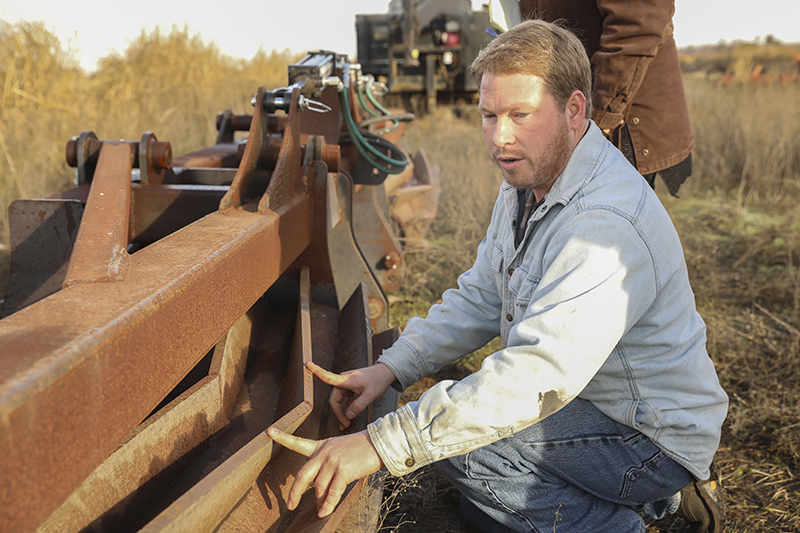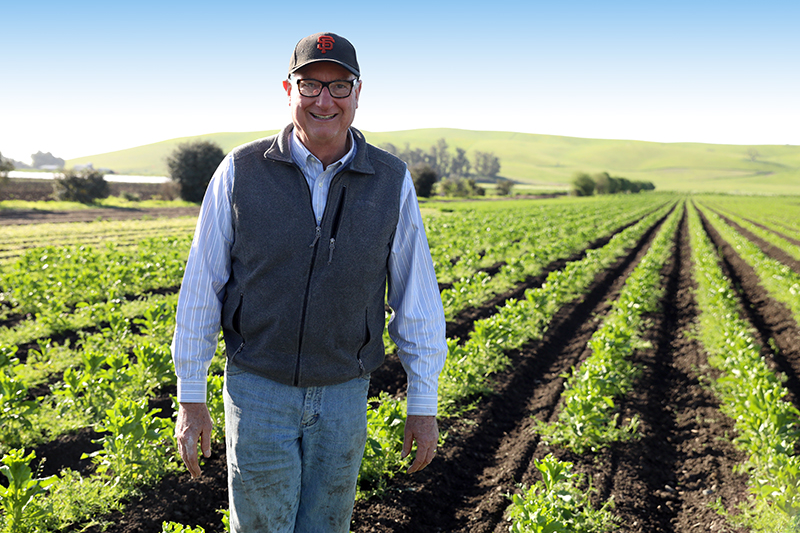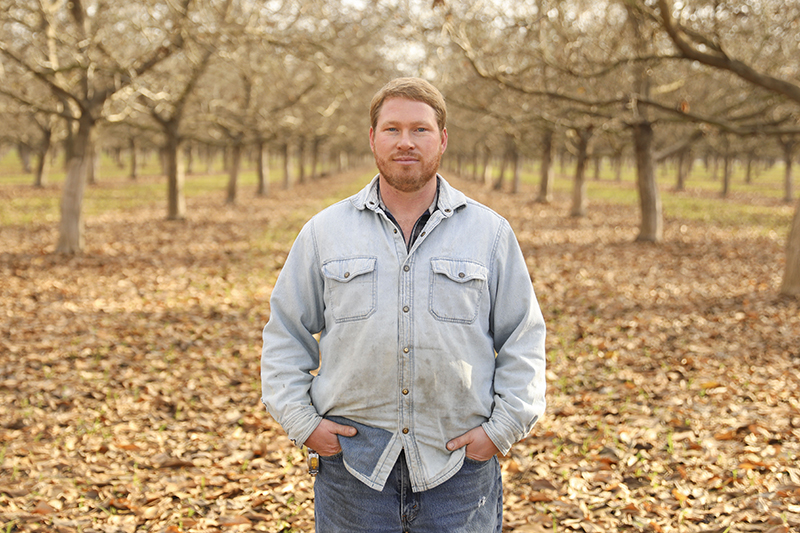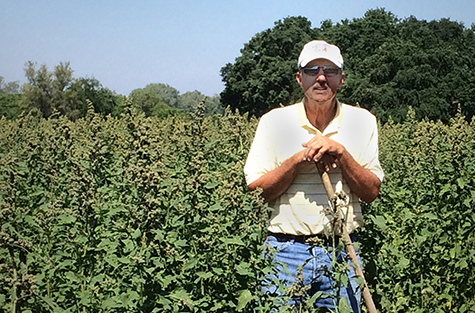
Thinking Beyond the Plow: Equipment Regenerative Farmers Use to Get the Job Done
by Sheryl Karas, RAI staff

When you think of agriculture is there anything more iconic than the sight of a farmer riding a tractor or, going back further in time, using a horse and plow? Farming has depended on the use of such equipment since the Mesopotamians invented the ox-drawn plow in 3100 B.C., only today it is heavy machinery that deeply tills the soil. But times change. When this approach to farming was created we did not fully understand how deep tilling would disrupt the biology that creates healthy soil and the impact that would have on the environment. Because of climate change and frightening levels of worldwide soil degradation, it’s time to evolve beyond the plow and use new methods that help address these problems. Regenerative Agriculture is doing exactly that. In this article, you’ll meet three innovative farmers who are learning how to put away the old school plow and disc and move into no-till tools and minimum disturbance weed control technology instead.
Phil Foster
 Our conversation with Phil Foster(opens in new window) of Pinnacles Organically Grown Produce in San Juan Bautista and Hollister, CA is a great place to start. Because he’s happy with the success he has had with conventional tillage he is proceeding cautiously and conservatively by experimenting with a small part of his acreage using a Conservation Innovation Grant (CIG) from the Natural Resources Conservation Service (NRCS) agency of the United States Department of Agriculture. Phil Foster and his wife Katherine already went through the process of converting a completely conventional farming operation in 1989 to an organic one using the same cautious method of testing a few acres at a time. Their step by step successes led them forward and now they grow 60 certified organic vegetables, melons and fruit a year on more than 250 acres because it proved to be a wise economic move.
Our conversation with Phil Foster(opens in new window) of Pinnacles Organically Grown Produce in San Juan Bautista and Hollister, CA is a great place to start. Because he’s happy with the success he has had with conventional tillage he is proceeding cautiously and conservatively by experimenting with a small part of his acreage using a Conservation Innovation Grant (CIG) from the Natural Resources Conservation Service (NRCS) agency of the United States Department of Agriculture. Phil Foster and his wife Katherine already went through the process of converting a completely conventional farming operation in 1989 to an organic one using the same cautious method of testing a few acres at a time. Their step by step successes led them forward and now they grow 60 certified organic vegetables, melons and fruit a year on more than 250 acres because it proved to be a wise economic move.
Cover crops are essential to the new approach Foster is trying to grow his crops more regeneratively. His goal is to keep his fields covered at all times. In the experimental field where he grows carrots and brassicas like broccoli, cabbage, cauliflower, and kale, he has followed within just a few days with a cover crop of spineless safflower and vetch. In the past he would need to take the time to work up a field, disk it, and then get it ready to plant again in conventional ways. But in order to avoid deep tillage, he tried leaving the old beds established and planting right on top, sometimes using a Roterra, a light rotary harrow that works the ground to make a seedbed, sometimes not. It worked! Now he can turn a field around with cover crop seed in the ground in less than a week. Foster says “this was quite a revelation” to him. In the past in the winter, using a tractor, the soil would be compacted and they couldn’t do anything until that was addressed. But using a cover crop, he says, “treats the land better and allows you to plant more crops in sequence without as much tillage.”
At this point in the farm’s life, however, Foster feels that some minimal tillage is necessary so he uses special equipment modified to do the job. If he has a cover crop that he’s mowed and he wants to chop it up in order to make a seed bed, for example, he uses a vertical tillage tool to get the job done. There are a variety of vertical tillage tools on the market that simply slice the soil without turning it and overly damaging the soil structure and soil biology. Foster’s tool features a series of 20’ coulters, spaced 6 2/3” apart that fits his 40” and 80” bed spacing. If they find too much compaction in the soil, the machinery has chisels they can set up to loosen those areas. It also has another series of wavy coulters designed to chop and lightly press the residue into the soil. The machinery works the compost he already has spread on his fields a little bit into the top layer of soil. It’s typical of what they use in the midwest on large acreage farms. He took that idea and designed one for his 40” and 80” beds.
Foster also uses a Yetter Strip Tiller to open up a pocket in a mowed cover crop field so he can more easily plant his cash crops. In the front is a coulter, then a residue manager, a place where they can add a light chisel to loosen the ground up, some disks to throw the soil back, and a basket in the back to help make the seed bed. He has two of these–one for 80” bed tops and another for 40” beds.
A lot of the techniques Foster is now using are quite different than what they did before. He says, “Each year we are gathering a little more knowledge and have a higher comfort level on how to manage the systems this way.” Some early trials had less than optimum results but, by taking the time to learn as they go along, later plantings have been successful. He’s very encouraged to keep going.
Daniel Unruh
 In 2010, Daniel Unruh(opens in new window) got married and then helped his new father-in-law plant 190 acres of walnuts on his property in Colusa County, CA. A few years later, he and his wife inherited this farm and discovered he had a significant problem with nematodes and compacted soil. So, with help from NRCS and resource conservation district assistance he started down the path of converting his farm to Regenerative practices. It has taken time and effort—and he still uses fertilizers and chemicals in what he believes is an intermediate stage of the process—but the work of regenerating his soil is already paying off with thriving fields and higher net profits.
In 2010, Daniel Unruh(opens in new window) got married and then helped his new father-in-law plant 190 acres of walnuts on his property in Colusa County, CA. A few years later, he and his wife inherited this farm and discovered he had a significant problem with nematodes and compacted soil. So, with help from NRCS and resource conservation district assistance he started down the path of converting his farm to Regenerative practices. It has taken time and effort—and he still uses fertilizers and chemicals in what he believes is an intermediate stage of the process—but the work of regenerating his soil is already paying off with thriving fields and higher net profits.
One of the keys to Unruh’s success has been his willingness to experiment with innovative farm equipment of his own design. He is particularly proud of his unique roller crimper. Unruh’s process depends heavily on the use of cover crops. His choice of plants, now a mix of 15 different plants, naturally took care of his nematode problem and helped break up his compacted soil to allow for water infiltration. But then he needed a way to chop down the cover crop to stimulate the cover crops to create biomass more efficiently and create mulch. Some farmers use shredders for this purpose but for his walnut orchards he feels strongly that a roller crimper is more beneficial.
Roller crimpers have gained in popularity in both organic and conventional agriculture because of the benefits of the mulch created. It provides better weed control (especially early in the season), keeps the soil cool and improves moisture retention in the summer, protects the soil from erosion and raindrop impact, improves decomposition of the cover crop and makes a better environment for the soil biology.
“A shredder doesn’t leave a friendly environment for microorganisms, “ Unruh explains.”When I shred, I make a dense layer of plant material and the microorganisms, for a while, are aerobic because there’s some oxygen in there for that decomposition.” But as time goes by, he discovered that everything from a quarter inch down and below became anaerobic, a poor environment for the biology he wants to support. It also started to smell bad. By using a roller crimper that rolls down the cover crops while crimping the stem he has a coarser material that lays down without being too tight.
The crimper Unruh designed has chevron-shaped crimps (see photo at the top of this page). He explains: “You drastically increase the efficiency . . . when you have a chevron design because it’s using all of the weight on a shorter area than if you just had a flat bar.”
Scott Park
 Unfortunately, for some farmers, however, use of a roller-crimper doesn’t always fit with the constraints of the commercial industries with which they have to coordinate. For example, Scott Park(opens in new window), owner of Park Farming Organics in Meridian, CA, ran into timing issues with his tomatoes. Park farms a wide variety of crops today but he started in 1980 with tomatoes processed at a cannery as his main crop. When using a roller crimper, the timing is determined by when the cover crops are at the right age. When you are trying to avoid herbicides, the cover crop needs to have flowered and be in the reproductive stage but not gone to seed. But Park says that his operation revolves around needing to get his transplants in the ground soon enough to be able to harvest in time to meet the cannery’s goals. That timing doesn’t dovetail with the lifecycle of the cover crop.
Unfortunately, for some farmers, however, use of a roller-crimper doesn’t always fit with the constraints of the commercial industries with which they have to coordinate. For example, Scott Park(opens in new window), owner of Park Farming Organics in Meridian, CA, ran into timing issues with his tomatoes. Park farms a wide variety of crops today but he started in 1980 with tomatoes processed at a cannery as his main crop. When using a roller crimper, the timing is determined by when the cover crops are at the right age. When you are trying to avoid herbicides, the cover crop needs to have flowered and be in the reproductive stage but not gone to seed. But Park says that his operation revolves around needing to get his transplants in the ground soon enough to be able to harvest in time to meet the cannery’s goals. That timing doesn’t dovetail with the lifecycle of the cover crop.
That means Park has had to come up with other methods. He chops his cover crop instead of roller-crimping and designed a front mount mulcher with the Davis Machine Company to deal with the plant material so he could plant efficiently. His goal was to chop in front of the tractor tires so the tires would not press the biomass down into the furrow where he wanted to plant. His mulcher is designed with multi-length tines that reach into the furrow at an angle to pull up and chop the material before the tires press it into the ground. He then follows with a flail chopper. Everything is designed for “controlled traffic” to never press down on the soil except in the furrows. He uses very precise GPS to make sure they use the same path each time. 2/3s of the area he farms is never compacted.
Scott Park also designs or makes modifications to commercial equipment for other purposes. For example, (add blue seeder photo with white bins on top from website) he uses a modified Monosem planter to interplant corn with cover crop. He also uses it for direct-seeded tomatoes. The equipment is set up to fertilize with microbials and seaweed at the same time as he plants. He’s had particularly great success using it with the addition of Kinze Seed Firmers which are designed to press the seed into the soil exactly the way he needs it for consistent even germination with a tube that can place drops of the liquid fertilizer right behind the seed for the best results.
He also uses a Great Plains drill with a double disk opener (a no-till method used to create a furrow in which seed is placed, positioned and covered) that he modified by adding Kinze seed firmers. He added a tank with a hydraulic pump to get the fertilizer to the planter from the tractor. He just started using it to interplant cover crops with wheat and likes the approach very much.
Despite best efforts, however, Park still has had to deal with weeds. He goes through with the chopper and then uses a strip tiller to plant with. But he does wind up with weeds coming into the row. So he uses a piece of equipment called a “finger weeder” made by a company called Kult. The finger weeder can be run right over the plants when they’re about 4 inches tall and well-established to take out weeds that are only, at that point, about 1 inch tall. The finger weeder can pull those weeds out because they are not well-rooted while leaving his corn, tomatoes or beans intact. Timing of this process is critical. If you wait until the weeds are 2 inches tall, for example, it no longer will work because the weeds plants are already too established. But Park says “it does a fabulous job if you’re on top of it.” Not only that, he feels as if his crops respond extremely well and seem happier and healthier after this process.
Like Phil Foster, Scott Park used CIG grant money to buy a strip tiller planter that might have felt too expensive to invest in otherwise, even though he says he was strongly considering it anyway. The concept is that the only area disturbed is right where he’s putting 2 rows of corn on a 60” bed. His strip tiller is designed in such a way that the first blade cuts and makes a path for the planter. Another set of blades nudges any left over plant material off to the side. A piece clears the path while another brings a little dirt back in. This is followed by a concave roller that crumbles the soil in the row a little bit without pressing. He follows with his Monosem planter with the Kinze seed firmers.
Finally, being an innovative farmer, it would be wrong to finish this article without mentioning the unexpected flesh and blood “equipment” Scott Park has just started using on his farm. Sheep and goats are starting to replace his tractors in terms of chopping cover crop biomass! The animals love the cover crops and even mix the debris left over into the soil a little with their hooves as they walk. After the animals graze Park found he could go in with his strip tiller and seeder and leave out the use of chopping equipment entirely. The animals convert the biomass into manure which means they’re fertilizing the land as well, eliminating his need to spend as much time and money on compost. He’s not sure but is hoping that the nipping and chewing of the plants by the animals will stimulate the plants to go into survival mode and “get the root exudate working with the soil biology ‘jazzed up’ to do their jobs more efficiently.”
—
Typically, when people are trying to make a living and avoid too much risk while doing it, they want a one-size-fits all textbook to follow. So, of course, most farmers want formulas for success if you just follow the right steps: one, two, three. Certainly, here at the Center for Regenerative Agriculture we’re looking for “best practices” to make it as easy as possible to achieve success. But when we compare even just the small subset of Regenerative Mentor Famers here in northern California have to say, it becomes clear that while the goals and benefits of Regenerative farming practices are the same, the way farmers achieve these goals can vary quite a bit. Each farm ecosystem is different and presents different challenges, depending on the climate, time of year, and crops desired. As Scott Parker likes to say “you have to take the time to get to know your farm so you can work with the forces of Nature on your property instead of fighting against it.” But one thing is clear, the tools you use can make all the difference. These three farmers are proof of that and they care enough to teach others. The events page(opens in new window) on our website is a good place to find out more. Visit our equipment page(opens in new window) to see photos and learn more about the tools in this article.
